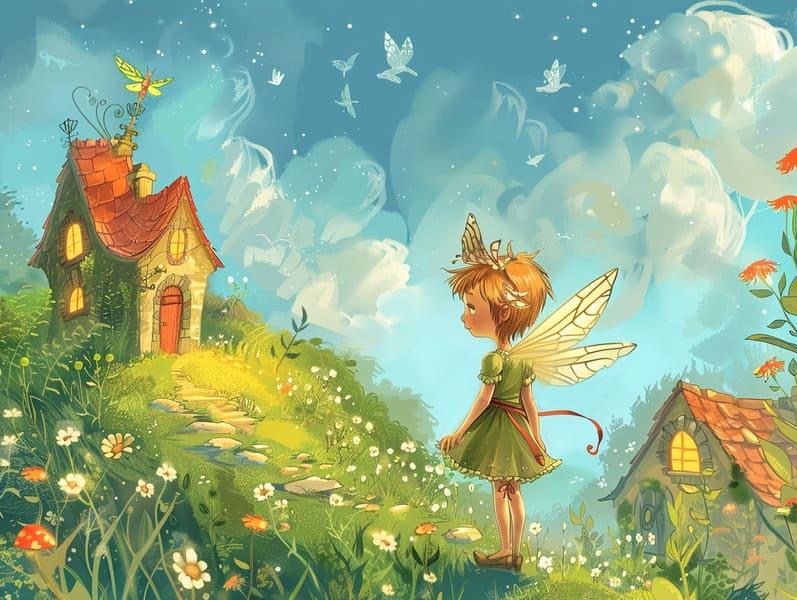A Brief History of Grimm's Fairy Tales and Its Invariable Radiance.
A Brief History of Grimm's Fairy Tales and Its Invariable Radiance.
Blog Article

Best fairy tales have ancient roots. These stories have been conveyed from one generation to the next long before they were ever written down. They developed from a variety of cultures, including Eastern traditions. They were initially transmitted among grown-ups, often carrying themes and messages mirroring the societal norms and beliefs of the time.
The famous Grimm duo, Jacob and Wilhelm Grimm, were among the first to gather many of these beloved fairy tales. Their compilation, "Grimm's Fables," included narratives like "The Story of Cinderella," "The Story of Hansel and Gretel," and "The True Story of Snow White," which have since become pillars in the world of iconic fairy tales. Similarly, Hans Andersen's magical stories, such as "The Mermaid's Tale," and "The Duckling that Could," have stolen hearts worldwide, securing their place in the pantheon of iconic fairy tales.
Even though they are old, these stories remain as impactful as ever, especially as children's bedtime stories. These whimsical stories are now available in numerous formats, including colorful picture books, delightful animations, and digital storybooks.
Their lasting presence can be ascribed to several captivating elements:
Life Lessons: Timeless fairy tales often teach important moral lessons. Fairy tales like "The Story of the Boy Who Cried Wolf" teach the virtue of integrity, while "The Hare and the Tortoise" illustrate the virtues of resolve and unpretentiousness. These stories offer kids clear distinctions between truth and falsehood, helping to shape their moral compass in a soft yet lasting way.
Empathy and Understanding: Ancient fairy tales frequently involve heroines facing trials and tribulations, stimulating young listeners to empathize with their struggles and root for their triumphs. For instance, "Beauty and Her Beast" illustrates the importance of looking beyond appearances to perceive the true nature of a person, encouraging empathy and discernment.
Cultural Insights: Many timeless fairy tales are rooted in the cultural contexts from which they sprang. Understanding these stories can provide captivating looks into different beliefs, enhancing a sense of world insight and respect.
Fantasy and Imagination: The imaginative elements in fairy tales—wizardry and magic—encourage children’s innovative ideas. These stories lead readers to extraordinary realms, boosting fantasy ideas and a sense of enchantment that remains a lifetime.
Classic fairy tales are not only alluring but also instructive. They provide mesmerizing tools in enhancing various mental and emotional abilities in young readers. When classic fairy tales are recited, they foster language development by introducing new word meanings and sophisticated sentence structures. This practice also boosts listening abilities and attention, as kids pay close attention, anxious to see what happens next.
Furthermore, analyzing the themes and characters of timeless fairy tales can foster problem-solving abilities and thinking skills. Kids are guided to spot patterns, guess what will happen, and figure out cause and effect. These reflections also advance young ones speak out their thoughts and feelings, adding to their emotional intelligence.
In today’s cyber age, the prevalence of online fairy tales has made these tales more available than ever. Digital sites and apps extend huge assortments of old fairy tales that can be accessed or listened on anytime, anywhere. Fairy tales voiced are particularly popular, presenting an captivating way for the young to relish these enchanting tales. Spoken stories and spoken videos guide characters and settings to life, often augmented by whimsical audio effects and soundtracks that elevate the tale journey.
The everlasting appeal of old fairy tales lies in their ability to evolve to modern society while retaining their central messages. Contemporary retellings of these fairy tales often include more inclusive characters and modern settings, making them relevant to today’s audience. However, the basic principles of courage, warmth, and integrity remain unchanged, continuing to appeal to audiences of all ages.
Classic fairy tales also offer a sense of protection and closeness. They render accessible a neat narrative with a recognizable beginning, middle, and end, often wrapping up with the wrap-up of conflicts and the triumph of goodness over badness. This consistency can be placating for children, affording a sense of solidity in an unpredictable world.
Traditional fairy tales continue to captivate and enlighten new generations, maintaining their majesty and applicability in modern society. As kids' bedtime tales, they yield a perfect blend of fascination and comprehension, backing moral values, empathy, and creativity. The proliferation of web-based fairy tales and the prevalence of fairy tales narrated promise that these ancient fairy tales remain available to new generations.
By upholding and narrating these tales, we continue to appreciate the rich tapestry of storytelling and cultural heritage. Whether you are experiencing a vividly illustrated book, viewing a web collection, or listening on an voice book, the loveliness of traditional fairy this site tales is always within reach. These tales reveal of the continued power of stories and its ability to hold us together across epochs and places.
Even if you are enjoying a vibrantly illustrated book, experiencing a electronic library, or listening on an voice book, the delight of old fairy tales is always within reach.
These narratives reveal of the timeless spell of storytelling and its ability to bring us together across centuries and lands, making a tie that charms and informs alike.